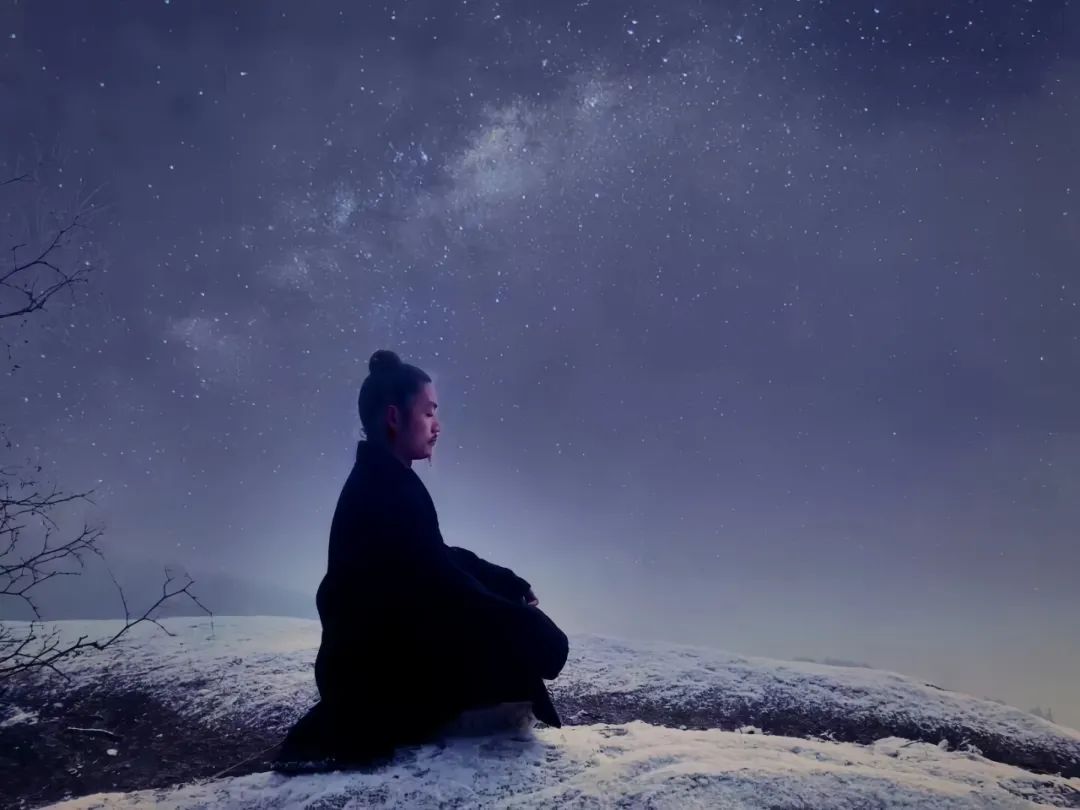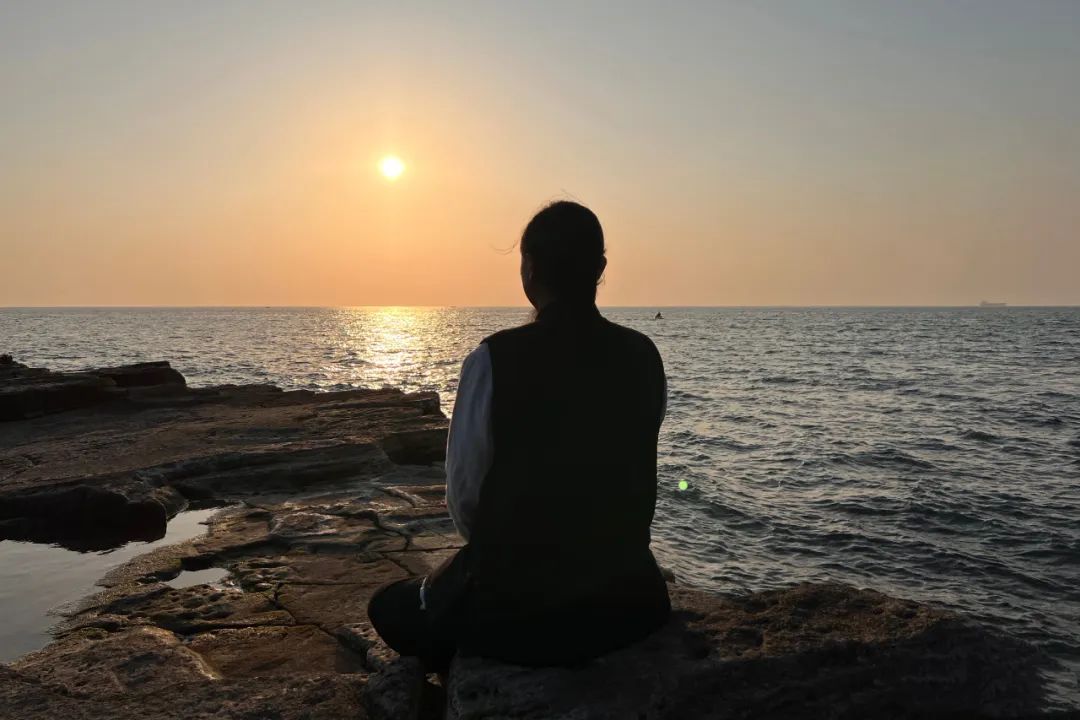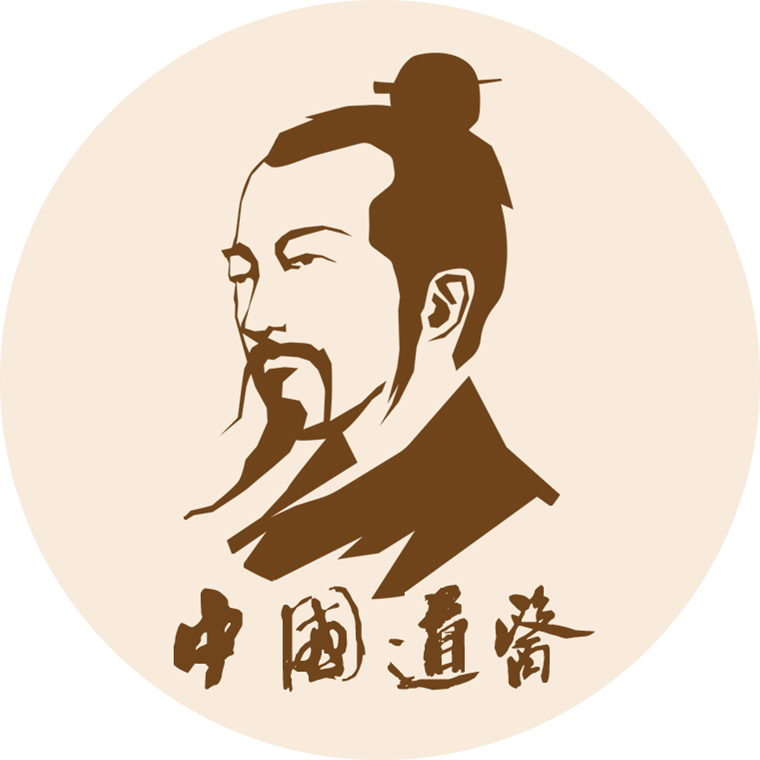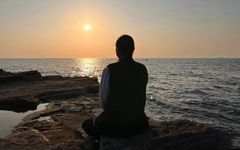 1
1
The Dual Reception of Sun and Moon is a method of cultivating internal power, aimed at absorbing the essence of the sun and moon to regulate and balance the Yin and Yang within the human body.
In the book “Xingming Guizhi Quanshu”, it is stated: “The Dantian is like the sun, and the original nature in the heart is like the moon. When the light of the sun shines on the moon, the two converge, and the precious body will emit light.”
Additionally, the “Daozang: Taishang Jiuyāo Xīnyìn Miàojīng” also states: “The sun and moon in the sky represent Yin and Yang; Yin and Yang are the sun and moon. The sun belongs to the Yang soul, and the moon belongs to the Yin spirit. The soul and spirit represent a person’s spirit and Qi. The spirit prefers tranquility, while Qi prefers activity; their movements often change between Kan and Li. Regarding the secret of movement and stillness, in the first half of the month, the soul guards the spirit, while in the second half, the spirit guards the soul. Mastering this method, the effects of short-term cultivation can equal a year of natural transformation.”
In the “Zhengyi Fawen Xiuzhen Zhiyao”, it is mentioned: “The light of the sun and moon can save aging and disability,” indicating that in the practice of Dan Gong, collecting the essence of the sun and moon can regulate the balance of Yin and Yang and has anti-aging effects.
The sun refers to true Yang, and the moon refers to true Yin. The Dual Reception of Sun and Moon means gathering the Qi of true Yang and true Yin within the body through intention, allowing Yin Qi to sink and Yang Qi to rise, achieving an even distribution and mutual harmony of both types of Qi.
This method aligns with the natural laws of the human body, allowing the essence of the sun and moon to gather within oneself, thus helping people achieve longevity and even immortality.

2
1. You can choose to practice sitting, standing, or lying down; the key is to be natural and comfortable. When sitting, keep your body straight, with your feet flat and apart, sitting upright on a chair, with the thumbs and middle fingers of both hands touching to naturally form an arc, then place them on your legs.
When standing, keep your feet parallel and shoulder-width apart, with your knees slightly bent, elbows turned outward, and arms forming an arc away from the body, with the thumbs and middle fingers of both hands touching.
When lying down, place your palms facing down, with your arms forming an arc away from the body, lying on your back with your legs apart. Regardless of whether you are sitting, standing, or lying down, do not move your body afterward; relax your entire body, lightly touch the roof of your mouth with your tongue, slightly close your eyes, and concentrate your spirit.
2. Slowly relax your entire body, feeling that every part is relaxed. Pay close attention to this feeling, letting go of all distractions, calming your mind, and stabilizing your emotions, while internally suggesting to yourself that you are beginning to practice the Dual Reception of Sun and Moon.
Keep your body still, avoid external disturbances, maintain absolute silence, and do not change your posture.
3.Imagine a very cold moon, feeling its chill, envisioning your entire body surrounded by it, as if your body is frozen. Then, imagine absorbing the moon’s coldness into your body until you feel every part filled with this coldness.
4.Next, imagine the rising sun, which is fiery red, and as it rises to noon, feel its intense heat, envisioning your entire body surrounded by it, as if your body is about to be incinerated. Then, imagine absorbing the sun’s heat into your body until you feel every part filled with this heat.
5.Then, imagine your upper body being scorched by the sun while your lower body is surrounded by the moon’s coldness, creating a state of half heat and half cold.
6.Next, imagine this intense heat and cold slowly merging together until your entire body becomes gentle, as if bathing in warm water, feeling neither hot nor cold.
7. Enter a meditative state, counting your breaths, a total of three hundred and sixty times, while using inner vision to feel each part of your body.
8.Calm your mind, suggesting to yourself that you are about to end your practice. Then, slowly breathe, concentrating your spirit in the Dantian, feeling the Qi sinking into the Dantian.
“Ecology” refers to the organic connection between living beings and their environment. Ecological ethics is the moral concept, basic norms, and ethical practices regarding the relationship between life existence and the ecological environment. Since the 20th century, with the widespread recognition of environmental crises, ecological awareness has suddenly emerged from professional circles to the public stage, tasked with influencing human environmental practices and maintaining global ecological balance, becoming a prominent subject worldwide. Daoism is not ecology, but its ecological ethical spirit is irreplaceable due to its unique characteristics; otherwise, it would not have declined and then revived, continuing to influence deeply to this day. In terms of ethical understanding, Daoism emphasizes the joy of life, tranquility, simplicity, and the enrichment and expansion of the spirit, focusing on the coordination between self and nature, human-centered, with content that is simple yet profound, broad yet concise, possessing infinite interest; in terms of ethical practice, Daoism is dedicated to cultivating the essence of the Dao, nurturing obscurity, and seeking life through emotional, behavioral, natural, human, and cultural interactions, thus demonstrating a conscious dynamism in developing life’s vitality, a unity with natural objects, and a holistic system of ethical understanding. In Daoist terms, it is said, “The way of nature cannot be violated” and “Follow the way of nature.” This nature refers to the essence of things, the nature of life, and the nature of society. Understanding the essence of things, life, and society, and seeking the style, attitude, and demeanor that life and nature should have is the goal and spiritual pillar pursued by Daoist ethics.
The ecological ethical spirit of Daoism is reflected in its exquisite and profound content and the appeal it holds for the world, embedded in the vitality that allows it to endure and develop over time. Specifically, the ecological ethical spirit of Daoism is mainly manifested in six aspects:
First is the spirit of the unity of all things. The highest object of worship in Daoism is the “Dao”. The purpose of Daoism is to achieve immortality and become an immortal. Achieving the Dao means integrating with the Great Dao through cultivation; thus, Daoism is the religion that emphasizes real life the most among many religions in China. It views all things in the world as one, believing that the existence of all things in nature has its rationality, and humans are a part of the universe, should enjoy life, value life, and continuously elevate life. Humanity should also respect the existence and individuality of all things with an awareness of equality. The early Daoist classic “Taiping Jing” states: “Heaven and earth are in harmony, sharing the same heart, coexisting with all things,” believing that the ideal peaceful world is one where humans and all levels of natural things coexist harmoniously and prosper together. In the thoughts of Daoist philosopher Ge Hong, the awareness of equality in the unity of all things is also very clear and rich; he believes that through cultivation, humans can achieve the ideal of “longevity and immortality” or the state of unity with nature or the unity of all things. Daoism also has the thought of “the unity of the way of life, valuing life”; Laozi pointed out that the Dao is the origin of the universe, the Dao produces one, one produces two, two produce three, and three produce all things. Zhuangzi said: “Heaven and earth are born with me, and all things are one with me.” This indicates that Daoism emphasizes understanding and grasping human will from the height of the universe. The ecological ethical spirit of the unity of all things tells people to live in harmony with nature and create a harmonious and symbiotic ecological civilization.
Second is the spirit of giving birth without possession. Related to the spirit of the unity of all things, Daoism believes that the highest realm and criterion of life is the morality of producing all things without possessing them. Daoism holds that the highest realm of physical cultivation and spiritual perfection is the “Dao”. How is the Dao produced? Ge Hong proposed: “The Dao arises from one, its value is without equal, each resides in its place, symbolizing heaven, earth, and humanity, hence it is called the three unities. Heaven obtains one to be clear, earth obtains one to be peaceful, humanity obtains one to be alive, and spirit obtains one to be spiritual.” He also considers this to be an elaboration of Laozi’s wisdom of the Great Dao. Laozi pointed out, “Man follows the earth, the earth follows heaven, heaven follows the Dao, and the Dao follows nature,” and the essence of nature is: “The Dao is revered, virtue is precious, and nothing commands it but remains natural. Thus, the Dao gives birth, virtue nurtures, grows, and protects, giving life without possession, acting without reliance, and nurturing without dominating; this is called profound virtue.” Therefore, only “the Dao follows nature” aligns with the thoughts of morality. Noble morality lies in proliferating all things without claiming them for oneself, helping all things without boasting of one’s contributions, and guiding all things without dominating them. The Tang dynasty Daoist scholar and physician Sun Simiao is a practitioner of this spirit; his medical theory is based on the unity of heaven and humanity, and the idea of giving birth without possession, stating: “Heaven has four seasons and five elements, humanity has four limbs and five organs, Yang uses its form, Yin uses its essence, which is what heaven and humanity share,” and “A good doctor guides with medicine and stones, saves with needles and agents, and a sage harmonizes with supreme virtue, assisting with human affairs; thus, the body has curable diseases, and heaven and earth have disasters that can be eliminated.” Sun Simiao himself “studied extensively, discussing the true one,” not only excelling in medical skills but also possessing noble character. This spirit of giving birth without possession in Daoism has considerable practicality and universal significance, proposing the concept of sustainable balanced development of worldly matters, revealing that humanity must follow nature, emulate natural laws, knowing what to do and what not to do, to achieve results; if one forcibly takes, it will backfire, disrupt harmony, and cannot reach a high realm.
Third is the spirit of shaping all things. Before Daoism, the “Zhou Yi Chuan” stated: “The great person aligns their virtue with heaven and earth, their brightness with the sun and moon, and their order with the four seasons.” Here it points out that the heavenly way and the earthly way are opposing yet coordinated, and this coordination is mediated by humans. Laozi elevates humans to an important position: “Thus, the Dao is great, heaven is great, earth is great, and humanity is also great. Among the four greats, humanity occupies one.” Since “humanity is also great,” humans are not merely dependent on nature, subject to it, but should master the laws of nature. Because humans rely on nature for survival, they must engage in material exchange with nature. Daoism further proposes that humans should think thrice before acting, assess the time and situation, seek immortality and the Dao without forcing actions; if one acts against the Dao and “acts recklessly,” it will inevitably corrupt one’s nature and even harm humanity itself. Practitioners of Daoism believe that humans and all things in the universe resonate with each other, and the basis of this resonance is that both humans and all things possess spirituality, and humans communicate with all things. The universe evolves continuously, and life is everlasting; as a member of the cosmic community, humans should aim to promote the harmony and perfection of the entire universe, rather than engage in destructive behaviors that stifle the vitality of the universe. Therefore, Daoism not only provides a belief system for people to find their place in life or to focus on the improvement and adherence to doctrines and regulations, seeking solemnity and sincerity in rituals and prayers, but also concretizes beliefs or doctrines into various Daoist practices and techniques, forming an operational system that guides followers to practice. It can be said that Daoism is a religion that values the Dao, techniques, and actions, emphasizing both the elevation of the Dao and actively promoting practices and cultivation techniques. A true Daoist comprehensively grasps the essence of Daoism, not only understanding its fundamental purpose or possessing sincere faith but also undergoing training in Daoist techniques, diligently accumulating Daoist achievements, progressing without bounds, and continuously deepening and purifying their faith. This fully emphasizes the proactive agency of human activities and the adaptability of humanity to nature. As intermediaries and coordinators of heaven and earth, humans must both follow nature and constrain natural changes, guiding them to shape all things.
Fourth is the spirit of unity in diversity. The spirit of unity in diversity in Daoism is inherited from the spirit of “harmony and unity” in traditional ethics. The Daoist “Taiping Jing” proposes: “Harmony is the master of regulating all things,” believing that all levels of things in the natural world and human society contain three basic elements: Yin, Yang, and harmony, which together constitute one entity, hence the name of the three names sharing the same heart. “The vital energy has three names: the sun, the moon, and harmony. The body has three names: heaven, earth, and humanity. Heaven has three names: the sun, the moon, and stars, with the North Pole as the center. The earth has three names: mountains, rivers, and flat land. Humanity has three names: father, mother, and child. Governance has three names: ruler, minister, and people.” The three names sharing the same heart represent the ideal peaceful world. The way of Yin and Yang reflects heavenly will, so humans must follow the principles of Yin and Yang, maintaining harmony in relationships between people and between humanity and nature from all aspects, to eliminate disasters and strive for world peace. To achieve this goal, Daoism has developed the thought of harmony and unity in its belief system, alchemical techniques, talismans, and ritual norms. The ecological wisdom of unity in diversity helps people recognize the significance of the diversity of all things in the world. Protecting the diversity of things makes sustainable development possible.
Fifth is the spirit of cyclical regeneration. In terms of how to effectively utilize nature, traditional Chinese people have established the goals of “greatness” and “longevity,” believing that to achieve these goals, one must possess upright virtue, emulate heaven and earth, and use systems to restrain humanity’s insatiable desires, preventing harm to nature and humanity. The “Zhou Yi” points out two paths: the first is “Nine Two, steadfast and auspicious, is in the middle.” The second is “Upright and correct leads to communication. Heaven and earth are regulated, and the four seasons are established; regulation restrains the world, without harming wealth or harming the people.” Daoism has also developed similar thoughts, emphasizing that the recognition of life and the conditions for its existence is the wisdom and virtue of sages, and the ideal living world for humanity is a beautiful society where humanity and nature are one, believing that in such a society, life can circulate continuously, flowing without interruption, and be everlasting. Early Daoism believed that those who achieved immortality in ancient times either grew wings and flew, standing out from the nature of ordinary people, or transformed into different forms, like a sparrow transforming into a clam, or a pheasant transforming into a giant clam. Later Daoism absorbed more daily thoughts from humanity, starting from the perspective of life’s cyclical regeneration, regarding “aging without decline, longevity, and freedom of movement” as the path of immortals. The Daoist scholar Tan Qiao from the Five Dynasties viewed the universe, life, and society through the lens of “transformation,” proposing: “The void transforms into spirit, spirit transforms into Qi, Qi transforms into form, form transforms into essence, essence transforms into perception, and perception transforms into yielding…” The prosperity of life and society is in a process of unified change. Daoism advocates that humanity should restrain desires to maintain the vitality and developmental vigor of all things, which aligns with traditional Chinese thoughts of harvesting timber in the mountains according to the seasons, prohibiting logging before summer, prohibiting the capture of young animals and birds, and not overfishing or burning forests for hunting. Interacting with biological resources requires material exchange. This exchange is not about forcible possession but about adapting and adjusting to nature.
Sixth is the spirit of interconnectedness. Daoist thought has always viewed nature as a super-large system full of life, where all things are organically connected. The universe operates as the intersection of time and space coordinates. From the beginning of Laozi and Zhuangzi, the mysteries of nature have been explored to reveal the inherent relationships within the natural world. Laozi said: “The Great Dao is vast and encompassing, it can be left or right. All things hold it and give life without complaint, achieving success without claiming it. It nourishes all things without being the master, always without desire to be named small. All things return to it without being the master, which can be called great. Because it never seeks to be great, it can achieve greatness.” This means that the Great Dao, like vast waters, nourishes all things without selfishness or bias, like a great mother caring for all life, all life relies on the Dao for nourishment. Treating the natural world kindly is fundamentally because “humans and heaven are one.” Therefore, it is essential to protect the ecological environment. Zhuangzi said: “All things are seeds, differing in form and appearance, beginning and ending like a ring, with no distinction of order; this is called heavenly equality. Heavenly equality means the heavenly principle.” This means that all things come from specific species, but there are also connections and transformations between different material species, like a circular ring, with no beginning or end. This natural connectivity can be called “heavenly equality.” Daoism believes that the Dao is the origin of the world, the total source of all life, and the total driving force behind the generation of all things. The Tang dynasty Daoist Wu Jun said: “To connect and give life is called the Dao; the Dao is inherently nameless. To nurture and form is called virtue; virtue is inherently unlabelled. Attempting to discuss it, heaven, earth, humanity, spirits, immortals, and ghosts cannot exist without the Dao, nor can they be formed without virtue. The living do not know their beginning, and the formed do not know their end. Exploring the profound and seeking the hidden, one cannot glimpse its origin, entering the end of existence and exiting the beginning of non-existence, cannot investigate its signs, is called nature. Nature is the constant of virtue, the framework of heaven and earth.” Here, based on the inherent principles of the material world, the significance of the moral essence for the material world is reasoned, which contains ecological ethical wisdom of mutual abundance and orderly existence. The Great Dao is the origin of the universe and the starting point for observing all things; from the perspective of the Great Dao, heaven and earth are one, all things are together, and there is no distinction between self and other; although heaven and earth and all things have different forms, and human affairs have their own principles, fundamentally, each follows its nature, each fulfills its essence, and each is natural and at peace; this is the unity within diversity, the non-difference within difference. Realizing the unity within diversity and the non-difference within difference is to realize the Great Dao and to merge into the Great Dao.
In summary, the aforementioned aspects, when implemented in reality to maintain biological species and beautify the living environment, can contribute to maintaining ecological balance and achieving sustainable development. This means that the ecological ethics of Daoism must and can undergo modern transformation. The opportunity for transformation lies in the cultivation of a modern personality with noble spiritual realms. Because, according to Daoist views, the lofty realm achieved through cultivation is not mysterious or unreachable; the highest immortals are manifestations of human transformation and cultivation in the world. The expert in the history of Chinese religions, Mr. Mu Zhongjian, summarizes the characteristics of the Daoist immortal personality in several aspects: first, a deep and vigorous vitality, thus able to live healthily and long; second, a high spiritual realm, transcending the “small self” to achieve the “great self,” so the spirit can be immortal; third, extraordinary wisdom, possessing high insight and foresight, yet great wisdom appears foolish, blending with the dust; fourth, benefiting without harming, acting without contention, with merit in the world; fifth, being carefree and at ease, open-minded and composed, adept at resolving troubles, always maintaining a joyful heart. Achieving these aspects allows one to be called a living immortal. The so-called immortal realm, besides being happy and joyful, is also a beautiful and pleasant environment. Blue skies and white clouds, green mountains and clear waters, birds singing and flowers fragrant, with people living peacefully and happily together, this is the beautiful life akin to a paradise on earth.
9.Finally, separate the thumbs and middle fingers of both hands, then cover them on the lower abdomen, swallowing the saliva in your mouth. Next, perform the actions of a raccoon washing its face and a princess combing her hair nine times each, then slowly open your eyes and gaze forward for a while, drawing the spirit inward, and then stand up and walk slowly; this concludes the practice.
Note that if practicing outdoors, during the day, face away from the sun, and at night, face the moon. Imagine that the light of the sun and moon is absorbed into your body through the center of your eyes, then spreads throughout your body.
Author of this article: Wu Mei






Daoist Medical Video Account
⊙ The content of this article is for clinical reference only; non-TCM professionals should not attempt to use herbs.
⊙ Some images and texts are sourced from the internet; if there is any infringement, please contact us for removal.
⊙ For Daoist medical consultations, add WeChat ID: daojiaoh
⊙ For submissions and collaborations: [email protected] (original submissions are welcome)
Selected Articles
❶ Poor sleep leads to a shorter lifespan! TCM can help you easily achieve good sleep!
❷ Sour plum soup, a “medicinal drink”: generates fluids and stimulates appetite, also stops coughs!
❸ Daoist alchemical practice: the method and position of the tongue against the palate, be careful not to get it wrong!
❹ Insufficient blood supply to the brain, daily massage of two acupoints keeps the brain agile!
❺ A very classic formula from Zhang Zhongjing, an effective remedy for cervical spondylosis!
❻ Learn about a Chinese herb every day: scallions!
❼ The kidneys have “four fears”; to nourish the kidneys, remember the “three don’ts” in the morning and “two musts” before bed!
❽ The hotter it gets, the more you should eat this vegetable! It helps eliminate constipation, protects teeth, eliminates bad breath, and promotes weight loss!
❾ How to enter the mysterious gate of alchemical practice, easy to say, but hard to do!

 Scan to follow Daoist Medicine
Scan to follow Daoist Medicine
Here, there are no chicken soup recipes, folk remedies, rumors, or advertisements, only reliable Daoist health and wellness knowledge.


